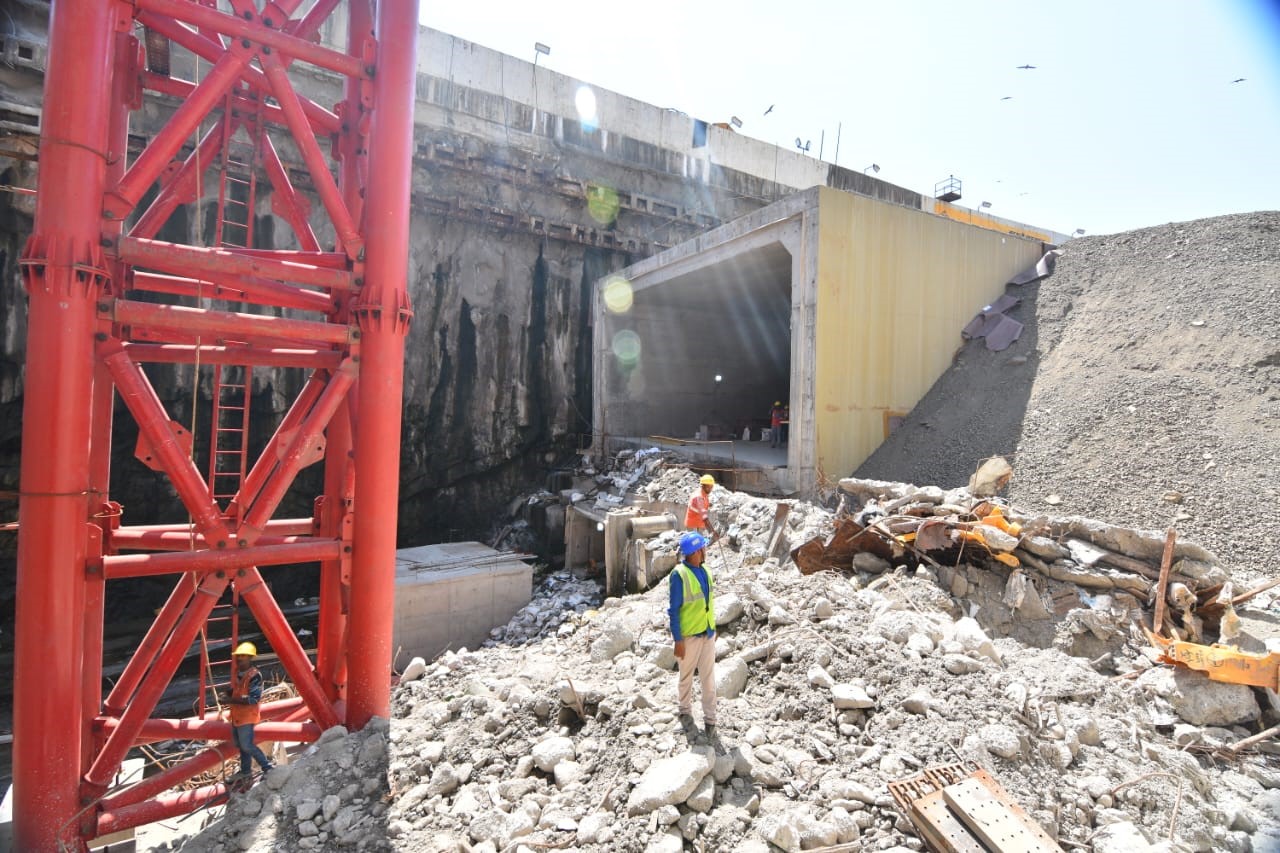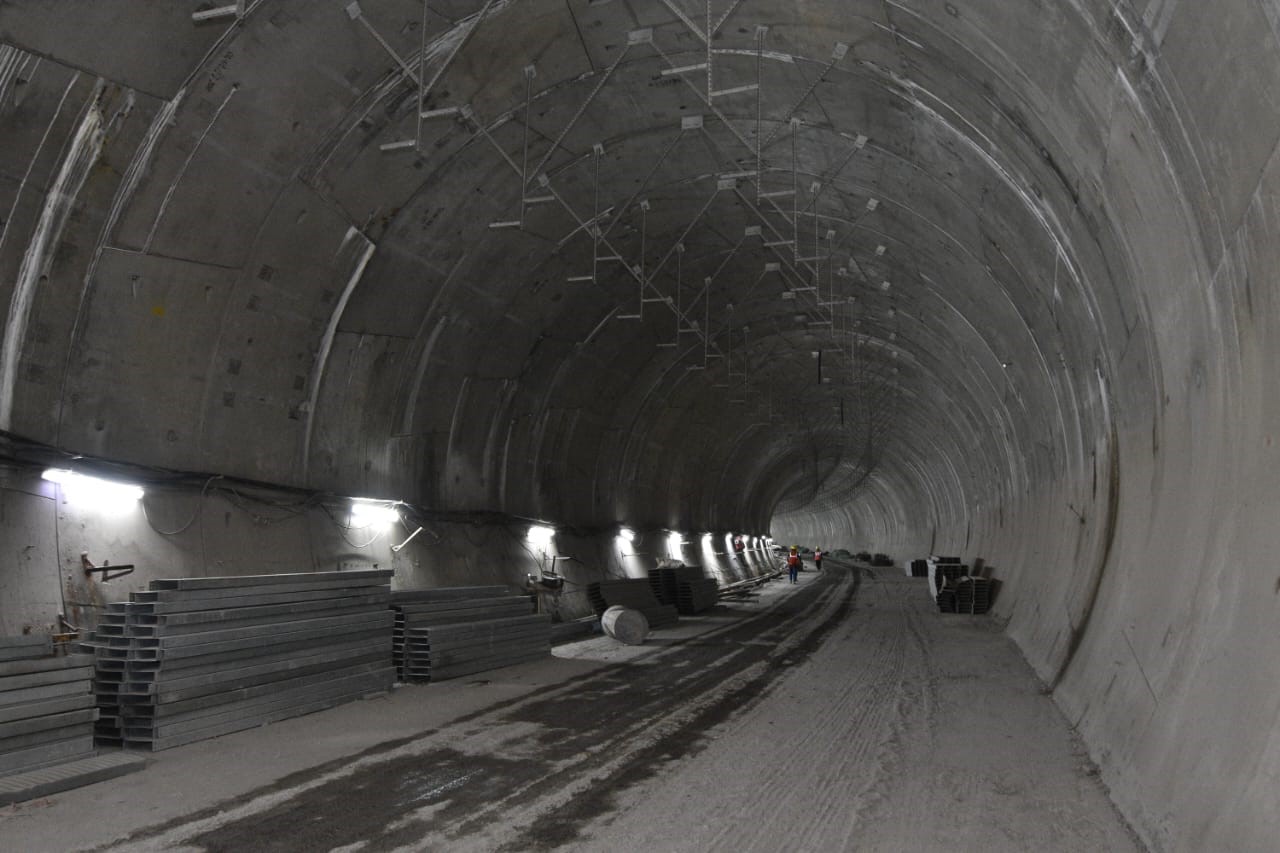Ministry of Home Affairs
BMC to highlight Coastal Road Project's disaster resilience in the G-20's 2nd Disaster Risk Reduction Working Group Meeting
प्रविष्टि तिथि:
13 MAY 2023 6:53PM by PIB Mumbai
Mumbai, 13 May 2023
The Coastal Road, which is counted as one of the most significant upcoming infrastructure projects of Mumbai, will be a part of deliberations in the upcoming G-20 2nd Disaster Risk Reduction Working Group (DRRWG) Meet in Mumbai from May 23-25, 2023. The Brihanmumbai Municipal Corporation (BMC) will highlight the disaster management measures taken for this project in front of the DRRWG delegates. The DRRWG's five key priorities are early warning, resilient infra, national response, building back better and nature-based solutions.
The construction of the 10.58 km long Coastal Road Southern Section from the Princess Street Flyover on Shyamaldas Gandhi Marg to the Worli side of the Worli Bandra Sea Link is currently in full swing and, so far, 73.5 percent of the work on the project has been completed under the supervision and guidance of Commissioner and Administrator of Brihanmumbai Municipal Corporation Dr. Iqbal Singh Chahal and Additional Municipal Commissioner (Eastern Suburbs) Smt. Ashwini Bhide. It is coming up on a reclaimed area of 119 lakh 47 thousand 940 square feet (111 hectares) and will be an addition to Mumbai’s 250 Km road network.
Speaking about the project, the Additional Municipal Commissioner (Eastern Suburbs), BMC, Smt. Ashwini Bhide said, the project design has factored in the probable disasters, apart from environmental compliances and ease of living for citizens. About 13.6% of project area i.e. 15,60,770 square feet (14.50 hectares) is earmarked for the construction of safety wall which will protect against sea waves. The 8.5 km long sea-wall is built in such a way that marine life flourishes, while corrosion, soil erosion and tidal effects are taken care of. This will also be an important issue for disaster management matters. For the construction of the wave wall, which will act as a protection wall, the highest level of flood has been taken into account. It is going to act as a protection to the city from flood and storm surges. These are going to be beneficial not just to the coastal road, but to that section of the city as well.
Besides, all necessary fire protection measures have been provided for in the project. The 2 km long twin-tunnels have all provisions for fire-safety. Saccardo ventilation system provided with the tunnels will improve ventilation and air flow. Hence, in case of a fire incident in one tunnel, the other will remain smoke free. The whole structure is built in a manner to resist 100 MW fire for three hours! There would be fire retardant materials and fire boards provided in a way to resist a temperature of 1200 degree C for three hours.
Factoring in the floods and other related disasters, the project gave a chance to improve the Storm water Drainage Network of Mumbai. Since some areas have been added to the city landmass because of the reclamation, the existing Storm water Drainage network was extended beyond the sea wall.
It will be completely access-control connectivity between two important locations of the island city that will lead to increased speed of vehicles, reduced consumption of fuel and reduced travel time. Hence, it will lead to a reduction in carbon footprint as well! It will be accompanied by Mumbai's largest and most beautiful sea promenade and help reduce pollution. Therefore, it will add speed and comfort in travel to the extent of reducing travel time from Marine Drive to Worli from 50 minutes to 10 minutes and bring immense environmental benefit to the city.
While speaking about environmental considerations, the Additional Municipal Commissioner (Eastern Suburbs) informed that two colonies of corals were found in the sea during construction, which didn’t exist when environment assessment and other studies were done. The National Institute of Oceanography (NIO) was roped in for the purpose and the coral-colonies were successfully translocated to other locations where they are flourishing now. Conditions imposed for environment clearance for the project have been adhered to very strictly, informed Additional Municipal Commissioner (Eastern Suburbs). While designing this project, all concerns connected to environment were duly taken care of. It is a sustainable and resilient project design from climate change perspective as well, she stated.
In the construction phase, all precautions are being taken to ensure no further damage is done to environment. The ready mix concrete plants and casting yards are fully covered to avoid further air pollution. There will be parks in that stretch that will protect the environment and enhance the beauty of the city.
The 8.5 km wide footpath from Worli to Haji Ali to Priyadarshini Park; will also have cycle-tracks, open theatres, underground parking and toilets too! Mumbai's famous 'Worli Sea Face' will soon have a new look, which is more comfortable and eco-friendly than before.
A new wide sea walkway will be constructed along the coastal road from Priyadarshini Park to Worli Bandra Sea-Link. The marine walkway coming up along the coastal road will be 20 meters wide and 8.5 km long, thereby making it the longest seaside walkway in the city. Cycle tracks, open theatres, parks and playgrounds, toilets etc. will also be developed along the 'Coastal Road'.

The project will also have a Control Command Centre after completion, which will be connected to BMC Disaster Control Room and Traffic Control Room of Mumbai Police. It is expected that most of the work of this coastal road will be completed by the end of this year i.e. November 2023.

The DRRWG is an initiative taken by India under its G-20 Presidency. The first DRRWG meeting was held in Gandhinagar in March-April this year. This initiative of India to include Disaster Risk Reduction in the G-20 is a part of the Sendai Framework for Disaster Risk Reduction 2015 to 2030 (Sendai Framework). This was the first major agreement that provides Member-States with a concrete action plan to protect development gains from the Risk of Disaster. It was endorsed by the UN World Conference on Disaster Risk Reduction and advocates for – ‘The Substantial Reduction of Disaster Risk and losses in lives, livelihood and health and in the economic, physical, social, cultural and environmental assets of persons, business, communities and countries’. It recognizes that the State has a primary role to reduce disaster risk so that responsibilities should be shared with other stakeholders including local government and the private sector.
The Member Secretary of the National Disaster Management Authority (NDMA), Shri Kamal Kishore will be present for this meeting. The NDMA is headed by the Prime Minister of India and is the Apex body for Disaster Management in India. The delegates attending the DRRWG meeting will be taken for a visit to the heritage-building of the BMC and the state-of-the-art Disaster Control Room located there.

BMC Disaster Control Room
* * *
PIB Mumbai | MM/Sriyanka / Darshana
Follow us on social media:
@PIBMumbai  /PIBMumbai
/PIBMumbai  /pibmumbai
/pibmumbai  pibmumbai[at]gmail[dot]com
pibmumbai[at]gmail[dot]com  /PIBMumbai
/PIBMumbai  /pibmumbai
/pibmumbai
(रिलीज़ आईडी: 1923919)
आगंतुक पटल : 1708